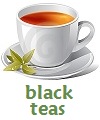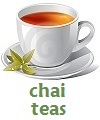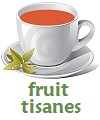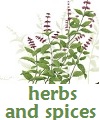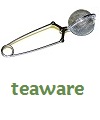TEA LEAF GRADES
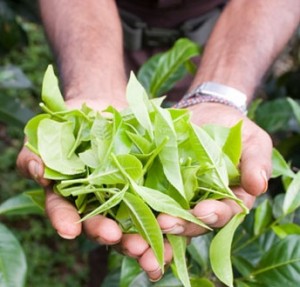 The ‘grade’ of a tea refers to the size of the tea leaf. When the tea leaves are picked and processed, they emerge as a mixture of different sizes and shapes. These different leaves must be sorted into similar sizes (grades), or the tea will brew unevenly – a small piece brewing quickly and a large piece brewing more slowly. The tea industry has developed a system of grading the tea leaves which varies from country to country.
The ‘grade’ of a tea refers to the size of the tea leaf. When the tea leaves are picked and processed, they emerge as a mixture of different sizes and shapes. These different leaves must be sorted into similar sizes (grades), or the tea will brew unevenly – a small piece brewing quickly and a large piece brewing more slowly. The tea industry has developed a system of grading the tea leaves which varies from country to country.
Black WHOLE LEAF teas are graded this way:
FLOWERY ORANGE PEKOE (FOP)
This tea is made from the bud and top two leaves of a tea plant’s newest shoot. It refers to the largest of the leaves, and contains tender, young leaves with some ‘tips’ (the delicate ends of the buds). Pekoe refers to the tiny downy hairs on the underside of the leaf. And Orange is NOT the flavor, but is thought to be the name of the royal family which first imported tea to Europe.
GOLDEN FLOWERY ORANGE PEKOE (GFOP)
This is the FOP tea with more of the golden yellow leaf buds, or tips. One step higher quality than FOP.
TIPPY GOLDEN FLOWERY ORANGE PEKOE (TGFOP)
This is GFOP with an even higher proportion of golden tips.
FINEST TIPPY GOLDEN FLOWERY ORANGE PEKOE (FTGFOP)
This is an exceptionally high quality FOP, or “Far Too Good For Ordinary People!”
SPECIAL FINEST TIPPY GOLDEN FLOWERY ORANGE PEKOE (SFTGFOP)
This is the very best FOP.
ORANGE PEKOE (OP)
This tea contains leaves that are larger than FOP, harvested when they are beginning to turn into leaves. Seldom contains any tips.
PEKOE (P)
Consists of thicker, shorter leaves than OP.
FLOWERY PEKOE (FP)
These leaves are shorter than OP and rolled lengthwise.
PEKOE SOUCHONG (PS)
Tea which is shorter and thicker than Pekoe.
SOUCHONG (S)
Rolled lengthwise, ragged and thick. Used for smoky Chinese and Taiwanese teas.
India, Sri Lanka, Nepal and other countries grade by the above method for Leaf teas, but they also grade the smaller sizes like this:
BROKEN LEAF
Golden Flowery Broken Orange Pekoe (GFBOP) for instance. Broken tea grades are the leftovers when other leaf grades have been sifted out.
FANNINGS (Dust)
Fannings are what is left after the broken leaf has been sifted out. These are used in traditional teabags, and brew very quickly.
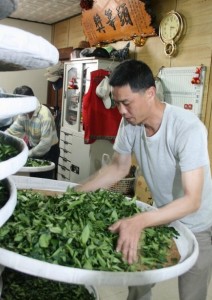 CTC (Cut, Tear and Curl)
CTC (Cut, Tear and Curl)
These teas undergo a special manufacturing method which uses a roller to smash the tea leaves, then they are put through a hammer-mill to tear them into small pieces for quick brewing and strong liquor.
Green Tea is graded by much simpler terms, from ‘good common,’ to ‘extra choicest’ in Japan. And in Taiwan, terms such as ‘fully superior’ and ‘fully good’ describe the grade.
So if you are totally confused about tea leaf grades, just remember: no method of grading can tell you how good the tea will taste. It only tells the size of the leaf, and maybe a little about how it was manufactured. Tea must be tasted to fully understand its quality and how much it will be enjoyed.



